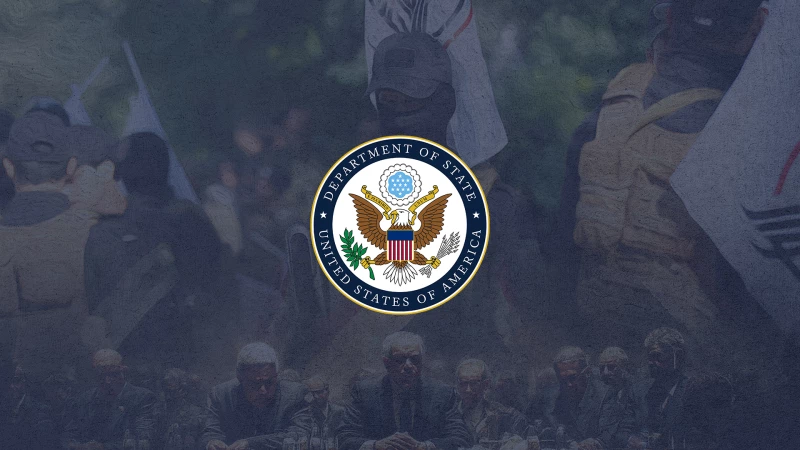STRASBOURG, France - Truck owners and drivers in Iran and its western Kurdish regions have gone on an extensive strike, protesting the government’s move to increase insurance and fuel prices. Officials told The New Region that the government has now reversed the decision.
The Iranian government had issued directives to increase insurance and fuel prices, which was immediately rejected by truck owners complaining that their own expenses and those of their vehicles were already high, while wages were low.
According to the decision, drivers’ insurance would be increased from 2.35 million Iranian tomans ($29) to 3.35 million Iranian tomans ($40). Gasoline, which used to be at 300 Iranian tomans per liter, was also increased, and transportation fares, lowered.
The government’s move prompted truck owners to declare a unanimous strike that lasted nearly 10 days, and their strikes are gradually beginning to show a mark on Iran's economy, which is going through a period of difficulty and there is always high possibility of protests.
Everything going back to normal
“The government accepted our demands and the strike ended,” said Akam confidently, a truck driver from Sanadaj’s Marivan district who has spent 18 years of his life on the road.
Akam, like many other truckers, are employees and drive vehicles that belong to other people to support themselves and their families. The deteriorating economy has pushed many business owners in Iran to charge for their services in dollars, “we earn in Iranian tomans, but we spend in dollars,” Akam noted.
“We receive wages in Iranian tomans, but the price of tires and other truck equipment is all charged in dollars and the prices vary greatly.”
As drivers, they receive a monthly salary of 15 million Iranian tomans, which translates to less than $200. They can transport up to three to four shipments a month depending on market conditions. There is, however, wide variation among the loads, depending on the type of shipment and the distance. For example, on certain shipments, they can charge anywhere between 40 million (500$) to 120 million tomans ($1,500).
Of the truck's income, about 50-60 million tomans ($600-730) are invested back into the truck’s expenses, the government decision would further exacerbate the situation by increasing their expenses and further reducing the income of the drivers and truck owners.
An official of Sanandaj’s Provincial Trucking Council told The New Region that “due to the insistence of truck owners and drivers and the prolongation of their strike, the government has reversed its decision,” adding that “insurance and fuel prices have remained unchanged.”
According to the source, who spoke on condition of anonymity for security reasons, “the wages have improved. Previously, goods’ owners would pay the [transportation] fare after two or three months, but now they must pay it within 48 hours.”
The source added that special measures will be taken for labor wages, and the fares will be calculated according to the distance covered.
It is estimated that there are over 552,000 truck drivers in Iran.
Fear of growing protest
In an economy where people are suffering from inflation, the depreciation of its currency, and falling incomes, the strike of truck owners and drivers could have spread to other sectors who are facing similar struggles.
“Last year, the insurance was 1.55 million Iranian tomans ($18), but this year it has increased to 4 million Iranian tomans ($49), but our salaries have not changed,” said a bakery worker in Saqqez.
"The government backed down from the trucks because it was afraid that the protests would explode and the country would go into crisis and the authorities would face problems," the official from Sanandaj’s trucker council noted.
The outcries of workers have also been heard in Tehran. “Truck owners are unhappy, mine owners are unhappy, factory owners are unhappy. All these protests are not normal,” Iranian lawmaker Javad Nikbin said in May.
“We do not consider protests a threat, rather we believe that protests are a sign of the revival of society,” government spokesperson Fatma Mohajeri said during a press conference in early May, adding that the government is aware of the problems of truck owners and drivers and is trying to address them.
“The consequences of the strike have been felt in the economy,” Akam told The New Region, noting that the halt in transports has already caused an uptick in consumer prices.
Transportation is considered the driving wheel of the economy, and disruptions can affect the prices of all goods.
“This sector, which is an important part of the production and supply chain, faces various problems, including insurance, expensive goods, and expensive cars,” Parliament Speaker Mohammad Baqir Ghalibaf said in a speech at the beginning of the strike, underlining the need to address and solve those problems “quickly and effectively.”
Truck owners and drivers went on strike in 160 cities in Iran its Kurdish majority areas in 2018. The protests seven years ago were driven by similar demands to the recent demonstrations.
Translated by Gashtyar Akram


 Facebook
Facebook
 LinkedIn
LinkedIn
 Telegram
Telegram
 X
X



